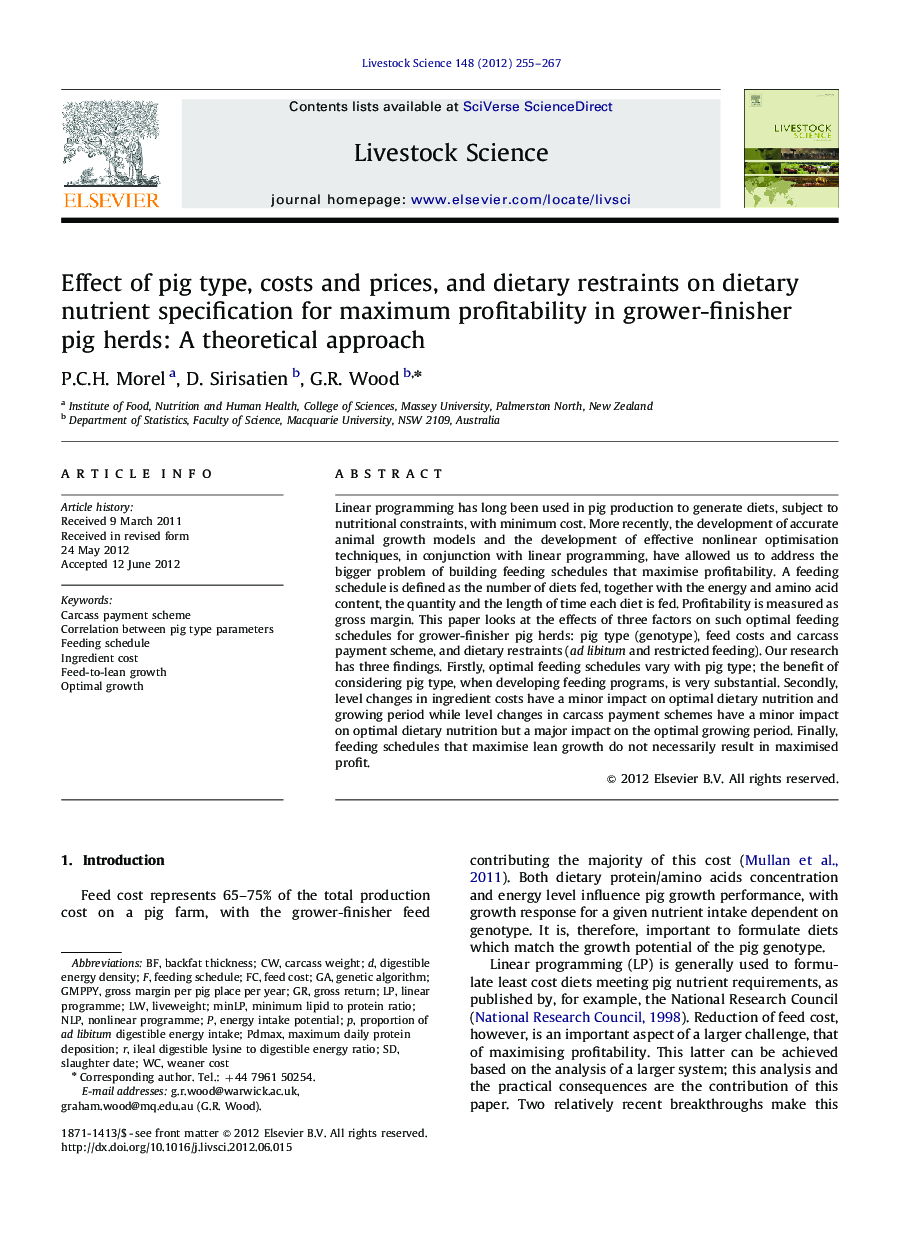| Article ID | Journal | Published Year | Pages | File Type |
|---|---|---|---|---|
| 5790606 | Livestock Science | 2012 | 13 Pages |
Abstract
Linear programming has long been used in pig production to generate diets, subject to nutritional constraints, with minimum cost. More recently, the development of accurate animal growth models and the development of effective nonlinear optimisation techniques, in conjunction with linear programming, have allowed us to address the bigger problem of building feeding schedules that maximise profitability. A feeding schedule is defined as the number of diets fed, together with the energy and amino acid content, the quantity and the length of time each diet is fed. Profitability is measured as gross margin. This paper looks at the effects of three factors on such optimal feeding schedules for grower-finisher pig herds: pig type (genotype), feed costs and carcass payment scheme, and dietary restraints (ad libitum and restricted feeding). Our research has three findings. Firstly, optimal feeding schedules vary with pig type; the benefit of considering pig type, when developing feeding programs, is very substantial. Secondly, level changes in ingredient costs have a minor impact on optimal dietary nutrition and growing period while level changes in carcass payment schemes have a minor impact on optimal dietary nutrition but a major impact on the optimal growing period. Finally, feeding schedules that maximise lean growth do not necessarily result in maximised profit.
Keywords
Related Topics
Life Sciences
Agricultural and Biological Sciences
Animal Science and Zoology
Authors
P.C.H. Morel, D. Sirisatien, G.R. Wood,
